#Elizabeth Vigée Lebrun
Text

Portrait of Marie Antoinette inspired by the portrait of Elizabeth Vigée-Lebrun
1 note
·
View note
Text

Elisabeth Maria Filipina Mniszech, 1797, de Élisabeth Louise Vigée Le Brun (París, 1755-1842). Óleo, lienzo, 48,5 x 44,2 cm, firmado y fechado abajo a la izquierda: Petersbourg / Vigée / Le Brun / 1797.
ZD S 1993002, Academy of Fine Arts and Design, Ljubljana.
La pintura está firmada y fechada en la parte inferior izquierda Petersbourg / Vigée / Le Brun / 1797 y muestra a Elizabeth Isabella Mniszech (1787–1830), hija de una de las sobrinas del rey polaco Stanislaus II August Poniatowski. Fue pintado durante la estancia de la artista en San Petersburgo y también se menciona en sus Memorias. Vigée-Lebrun gozó de la estima del rey Estanislao I de agosto, de su hermana la condesa Louise Zamojska y de su hija, la condesa Urzula Mniszech. Una copia de nuestra pintura en miniatura fue reproducida por J. Mycielski y S. Wasylewski en Portrety polskie Elżbiety Vigée-Lebrun, Lwów-Poznań, 1927.
Información e imagen de la web de la National Gallery of Slovenia.
1 note
·
View note
Text
Uno degli ultimi ritratti della contessa Du Barry, di Elizabeth Louise Vigée Lebrun. Il dipinto fu iniziato nel 1789 e terminato postumo, nel 1805.
L'8 dicembre 1793, fu giustiziata Madame Du Barry.
Dalle Memorie del boia Charles-Henri Sanson, veniamo a conoscenza degli ultimi suoi momenti di vita.
****
17 Frimaio.
La signora Dubarry è stata condannata ieri sera e giustiziata questa mattina.
Eravamo, secondo l'ordine, alle nove nel carcere, ma dovevamo aspettare perché la condannata era rinchiusa con il cittadino Denizot, giudice, e il cittadino Royer, vice dell'accusatore, che hanno registrato le ultime confessioni. .
Alle dieci furono introdotti i cittadini Vandenyver: il padre ei due figli, tutti complici di Madame Dubarry, ei cittadini Bonnardot e Joseph Bruniot, falsificatori di assegnatari, condannati dal tribunale penale.
Mentre ci stavamo organizzando, Madame Dubarry è arrivata. Camminava, appoggiata alle pareti, perché le sue gambe si stavano flettendo sotto di lei. Erano passati vent'anni dall'ultima volta che l'avevo vista e non l'avrei riconosciuta; era sfigurata dalla carnosità come dal dolore e dall'angoscia. Quando mi ha visto dietro i condannati già legati, ha lanciato un grande "Ah!" nascondendo gli occhi sotto il fazzoletto e si è inginocchiata gridando "non voglio, non voglio".
Quasi subito si è alzata e ha detto "Dove sono i giudici, non ho dichiarato tutto, non ho confessato tutto!". I cittadini Denizot e Royer erano da Richard, con due o tre controllori, che erano stati curiosi di vedere passare la povera donna; sono arrivati quasi subito, ma si sono rifiutati di entrare in anagrafe e le hanno ordinato di parlare subito. Dichiarò poi alcuni oggetti preziosi che erano nascosti nella sua casa a Louvecienne o affidati a vari privati, ma si fermò in ogni momento a lamentarsi e, in varie occasioni, percorse la campagna come se la sua mente fosse stata sviata dalla febbre.
Il cittadino Royer, che aveva in mano la penna, gli disse "È tutto?" E lui stava cercando di convincerla a firmare il verbale ma lei spinse via il foglio, si assicurò di avere qualcosa da aggiungere; si vedeva che stava cercando nella sua memoria.
Forse credeva che a causa delle immense somme che rinunciava, le sarebbe stato concesso il perdono e mai, nei suoi giorni felici, aveva desiderato così ardentemente ricchezze che ora, che le stava sacrificando per risparmiare qualche minuto sulla morte.
Alla fine, i cittadini Denizot e Royer si alzarono e gli dissero molto duramente che doveva sottomettersi ai decreti di giustizia e riscattare con il suo coraggio l'ignominia della sua vita passata.
Rimase come distrutta sulla sedia.
Un aiutante si avvicinò e pensò che fosse un buon momento per tagliarle i capelli, ma al primo taglio delle forbici si alzò e lo spinse via, e altri due aiutanti dovettero aiutarla a legarla.
Così ha lasciato andare, solo che ha pianto come non ho mai visto piangere.
C'era tanta gente sulla banchina quanto all'uscita della Regina (due mesi prima) e dei deputati dalla Gironda. Gridavano con decisione, ma le grida della vittima erano ancora più alte di quelle della gente. Non abbiamo camminato per cento passi finché non l'abbiamo sentita. Ha detto "Buoni cittadini, liberatemi, sono innocente. Io sono una persona come voi, buoni cittadini, non lasciatemi morire!!".
Non ci siamo mossi, ma i cittadini chinavano il capo e non le lanciavano più insulti.
Non riconoscevo più le persone della ghigliottina, eppure erano davvero le stesse persone che avevo visto per il cittadino Bailly.
A volte smetteva di gridare; dal viola che era il suo viso, la si poteva vedere diventare completamente bianca. Si abbandonò ai sobbalzi del carro come se fosse morta; barcollava qua e là; dieci volte sarebbe caduta se mio figlio non l'avesse sostenuta.
A volte si rivolgeva a me dicendomi: "No, giusto, non mi ucciderai?" Batteva i denti e la voce usciva dalla sua gola, rauca e agitata. Io mi sentivo addolcito come gli altri e più amaramente di chiunque altro, perché la vista di questa donna infelice mi ha ricordato la nostra giovinezza, che a malapena prediceva un simile destino, e il suo degno padre, la cui sollecitudine non poteva per toglierle né una grandezza così fatale né una caduta così terribile.
Nonostante tutti i miei sforzi per superare la mia emozione, il viaggio non era mai durato così a lungo. Una volta le ho consigliato di pregare, questo l'avrebbe sicuramente confortata. Le preghiere non le tornavano più e lei diceva "Mio Dio mio Dio mio Dio" senza trovare altro.
L'ordine era che sarebbe stata giustiziata per ultima, ma quando sono andato al piano di sotto, l'ufficiale giudiziario mi ha detto di organizzare per il meglio.
Come vedendo la ghigliottina che aveva ceduto, ho detto di montarla subito; ma non appena lei sentì le mani addosso, riprese conoscenza e, sebbene legata, spinse indietro gli assistenti gridando "Non subito; ancora un momento, signori carnefici, un altro momento, per favore." .
L'hanno trascinata via, ma lei ha lottato e ha cercato di morderli.
Era tanto forte quanto potente, perché sebbene fossero in quattro, passarono più di tre minuti a montarla. Se non li avesse scaldati spingendoli in giro, non so se li avrebbero superati, erano così sgomenti. Allo stesso modo, nessuno mormorò una parola e molti fuggirono da ogni parte come in rotta. Lassù è ricominciato, stava urlando; si poteva sentire da oltre il fiume, era molto spaventoso da guardare; alla fine sono riusciti a chiuderla, ed è stato fatto.
Poi abbiamo giustiziato gli altri.
18 Frimaio.
Oggi abbiamo ghigliottinato Jean-Baptiste Noël, deputato dei Vosgi, fuorilegge.
Lungo la strada, mi ha chiesto se era vero che Madame Dubarry aveva avuto tanta paura; e, un'altra volta, se avessimo pulito bene la lama, perché non era giusto che il sangue di un repubblicano venisse imbrattato dal sangue di una prostituta.

1 note
·
View note
Text
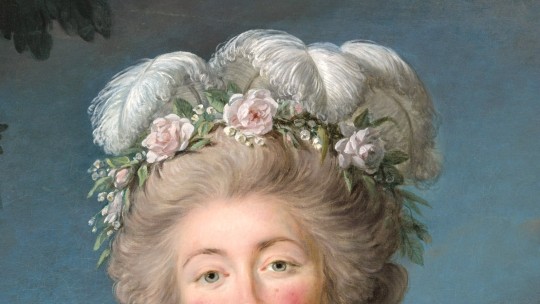

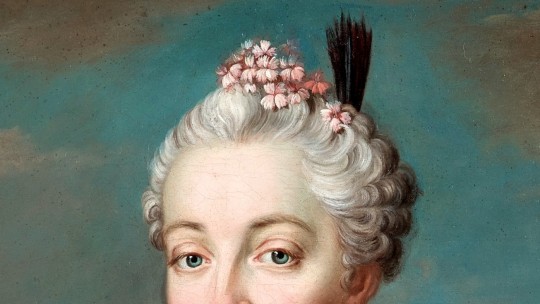

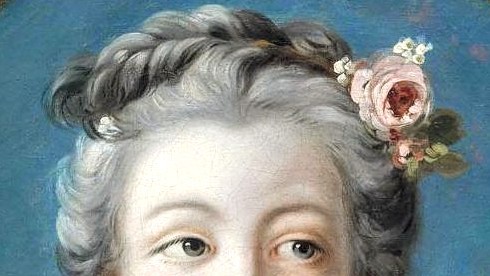


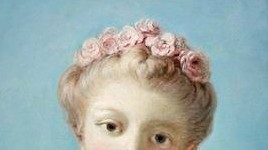
Can we bring back 18th century hairstyles?
Rococo Era paintings by Elizabeth Vigée Lebrun, François Boucher, Jakob Björck, Antoine-Jean Gros and François-Hubert Drouais.
#art#rococo#paintings#18th century#historical fashion#fashion history#hairstyles#historical hairstyles#art detail#painting detail#women in art#classical art#painting#fine arts#Elizabeth Vigée Lebrun#marie antoinette#madame du barry#françois boucher
9K notes
·
View notes
Text
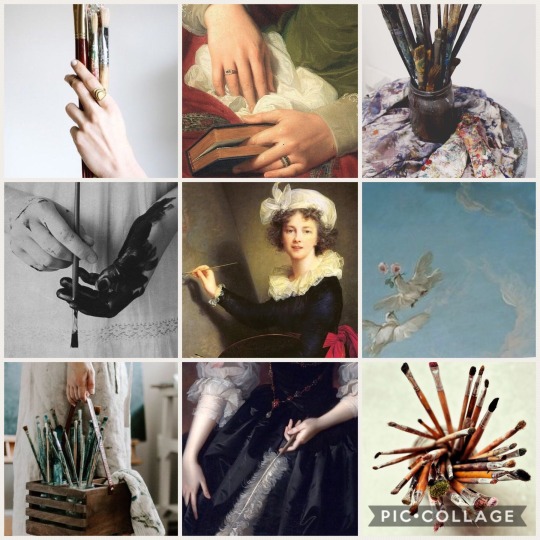
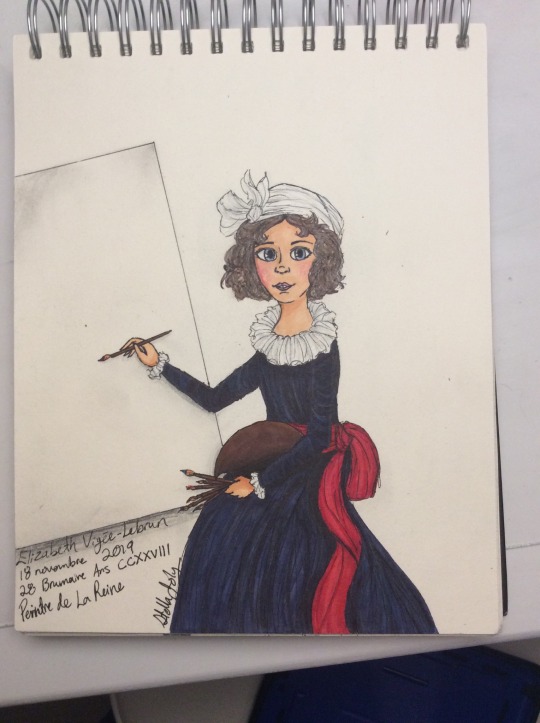


Elizabeth Vigée-Lebrun, famous French artists recognized for her many portrait of Queen Marie-Antoinette.
13 notes
·
View notes
Photo
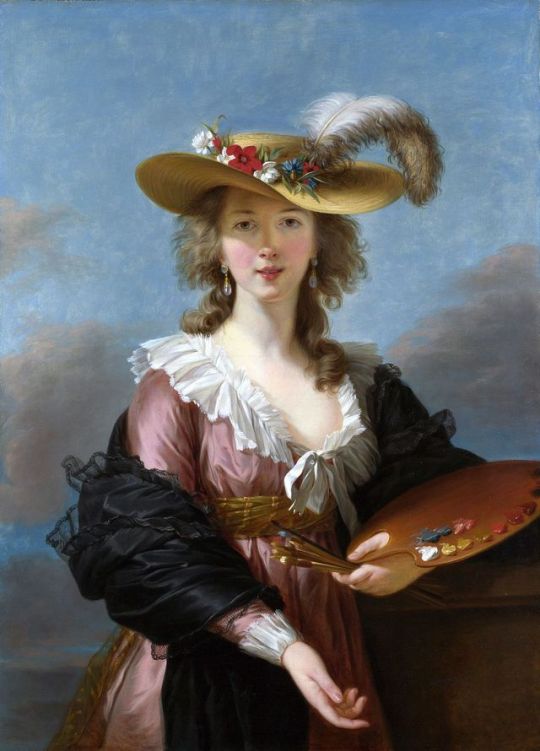
Elizabeth Vigée-Lebrun self portrait in a straw hat (1782)
#elizabeth vigée lebrun#marie antoinette#france#french painting#oil painting#versailles#french 18th century#classical art#Classic Art#classic painting#classical painting
9 notes
·
View notes
Text
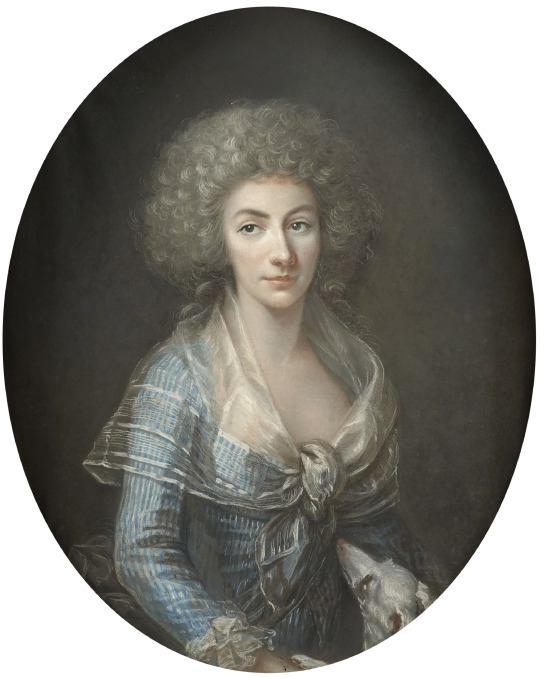
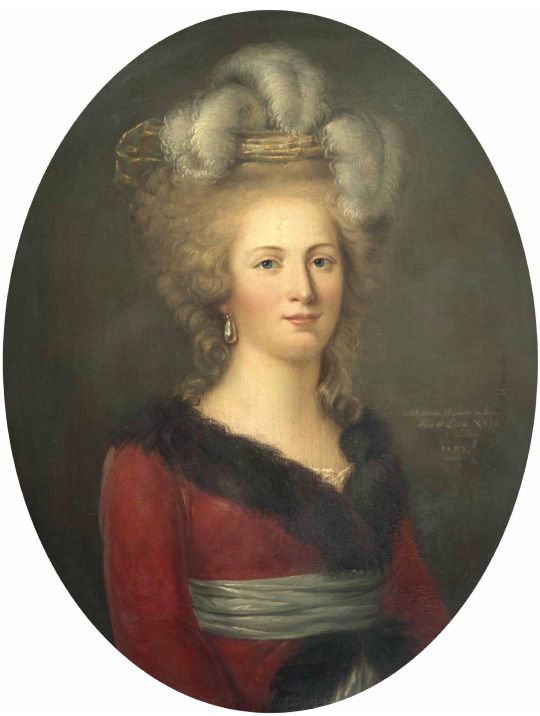
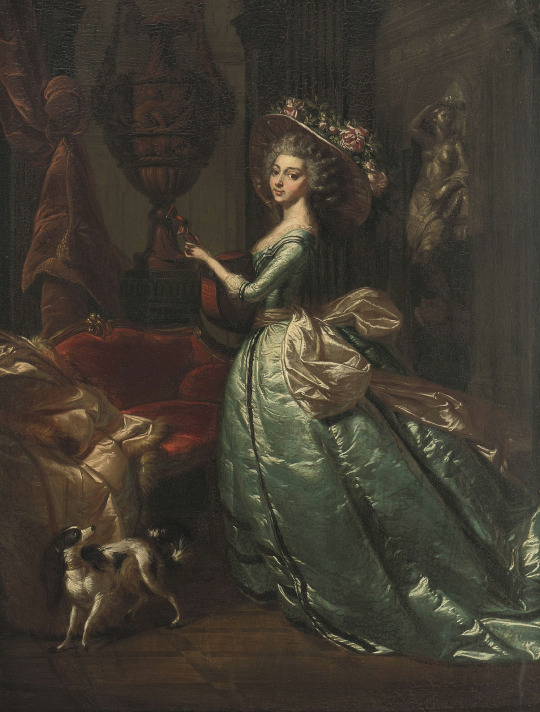
More 1780s coiffures and fashion (top and bottom):
Charlotte Antoinette Marie Septimanie O'Brien de Thomond (1759 -1808), duchesse de Praslin attributed to Aleksander Kucharski (Artcurial - 15Feb22 auction Lot 41) 2661X3343 @150 1.9Mj.
1787 Madame Elizabeth de France by Élisabeth-Louise Vigée-Lebrun (Christie's - 7Mar17 auction Lot 243) 3010X3991 @150 1.7Mj.
1785 Madame Eleonora Sullivan by Louis François Gerard van der Puyl (Schuler Auktionen - 25Mar22 auction Lot 3119). Dense flaws make repair impractical 2809X3706 @150 3.8Mj.
#1780s fashion#1780s coiffures#Louis XVI fashion#Rococo fashion#Charlotte Antoinette Marie Septimanie O'Brien de Thomond#Duchesse de Praslin#Alexander Kucharski#curly hair#bouffant coiffure#fichu#V neckline#sweetheart décolletage#long tight sleeves#flared cuffs#sheer cuffs#1787 fashion#Madame Elizabeth#Élisabeth-Louise Vigée-Lebrun#cap#feathered cap#modesty piece#bateau neckline#deep bateau neckline#fur trim#waist band#tight sleeves#1785 fashion#Eleonora Sullivan#Louis François Gerard van der Puyl#flowered hat
14 notes
·
View notes
Photo
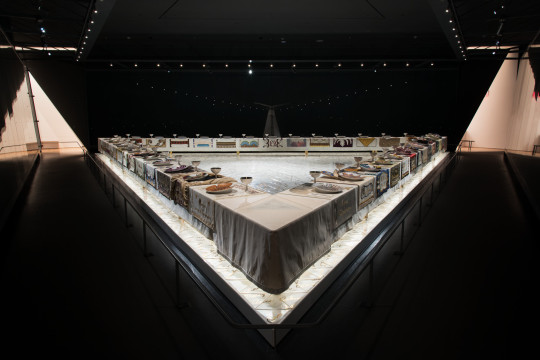
As we conclude Women’s History Month, we celebrate Judy Chicago's epic tour-de-force, The Dinner Party (1974-79), on view at the heart of our Elizabeth A. Sackler Center for Feminist Art. Among the 1,038 women from Western history featured in the installation, viewers can discover and make connections between artists like Sophonisba Anguissola, Maya Deren, Isadora Duncan, Lavinia Fontana, Hannah Hoch, Frida Kahlo, Edmonia Lewis, Gabriele Münter, Augusta Savage, Elisabeth Vigée-Lebrun, and many, many more. Read more about the artists, educators, activists, leaders, goddesses, and path-breakers honored at the table and on the Heritage Floor.
Judy Chicago (American, born 1939). The Dinner Party, 1974-1979. Ceramic, porcelain, textile; triangular table. Elizabeth A. Sackler Center for Feminist Art. Gift of The Elizabeth A. Sackler Foundation, 2002.10. Photo by Donald Woodman
#WomensHistoryMonth#namefivewomenartists#judy chicago#brooklyn museum#brooklyn#art#art museum#feminism#bkmfeministart#feminist art#womens history month#women artists
227 notes
·
View notes
Text
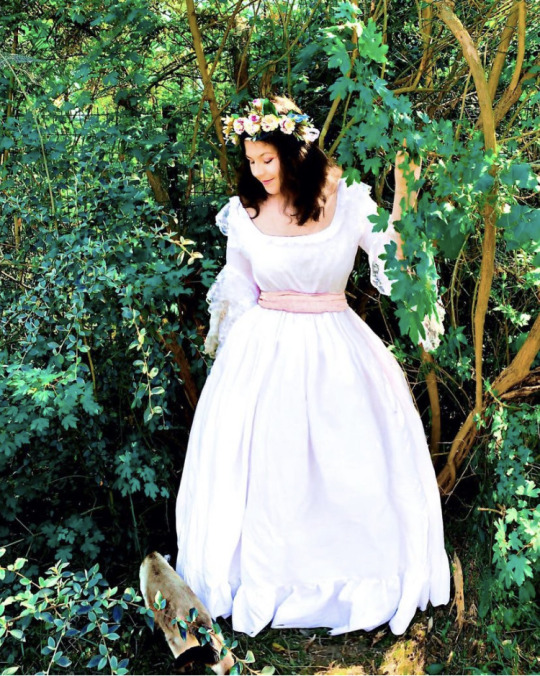
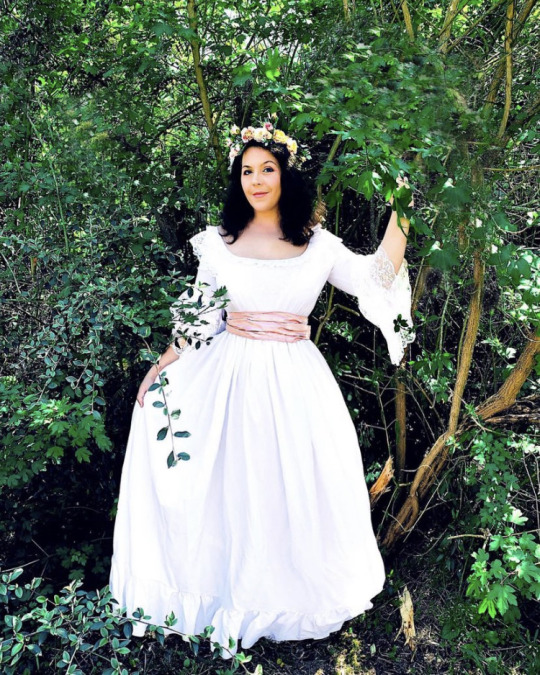
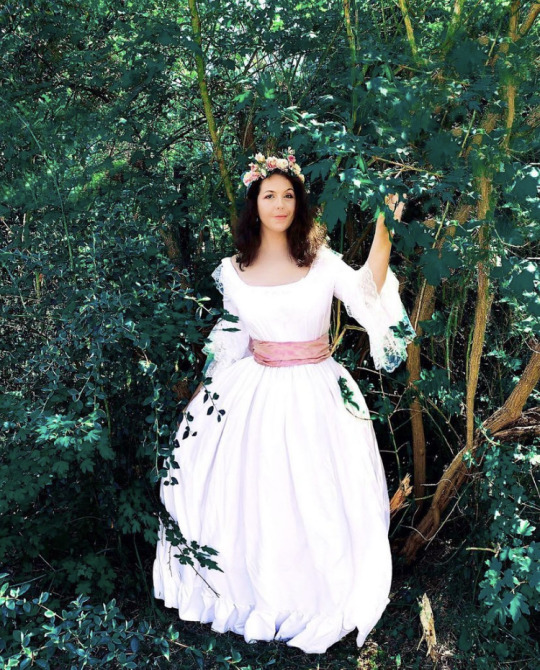
A la fin du XVIII°s, Rousseau et les naturalistes, tels que Buffon, promeuvent un "retour à la nature". En effet, des romans tels que "La Nouvelle Héloïse", très à la mode dans les cercles féminins, font l'apologie du bonheur simple et champêtre. Cette utopie véhicule la mode des bourgeois exploitant eux-mêmes leur terre.
En parallèle, on redécouvre la peinture hollandaise, de Gabriel Metsu ou de Pieter de Hooch, qui est à l'origine de la vogue du blanc dans la mode. Cette robe blanche est avant tout le symbole des valeurs de l'enfance qu'on essaie de préserver ou de retrouver. L'enfant est perçu, à cause de ses qualités de spontanéité, de naturel et d'innocence originelle, comme le représentant le plus proche de la Nature sur terre.
De plus, les élégantes de Bordeaux lancent aussi la mode à leur façon, en portant les robes des créoles de Saint Domingue, de longues robes blanches, avec des décolletés et poignets bouillonnés.
Marie-Antoinette -habillée par Rose Bertin, une modiste parisienne surnommée "la ministre des modes"- s'installe au Petit Trianon, et fait construire le Hameau, au fond du parc de Versailles. C'est un faux village campagnard, avec fermette, moulin, lac, tourelle... On y trouve d'authentiques paysans installés là par la Reine, et des animaux de ferme...
Au Hameau, Marie-Antoinette joue à la fermière.
Elle adopte donc des tenues plus en phase avec l'image romanesque qu'elle se fait de la vie à la campagne, et se met à porter une de ces robes apparue à la fin des années 1770 dans Galerie des Modes, Cabinet des Modes, des catalogues de modes d'alors.
La "Chemise à la reine" ou "en gaulle" est née. Il s'agit d'une longue robe blanche de mousseline, ou de linon d'Alsace, serrée à la taille par une large ceinture.
Lorsque Marie-Antoinette pose ainsi pour Elizabeth Vigée-Lebrun pour le Portrait de la reine, à l'occasion du Salon de 1783, c'est un scandale. On accuse la Reine de poser en "chemise", c'est-à-dire en sous-vêtements.
On lui reproche également de vouloir ruiner les manufactures de soie de Lyon, en préférant le coton et le linon. Or, ces manufactures sont sous protection royale, c'est donc une accusation très grave.
Elisabeth Vigée-Lebrun dut refaire son tableau, qui devint « Marie-Antoinette à la rose ». Quant à la robe portée par la Reine sur son scandaleux portrait, Marie-Antoinette l’envoya à son amie Georgiana Spencer, Duchesse du Devonshire, qui lança alors la mise en Angleterre.
5 notes
·
View notes
Photo
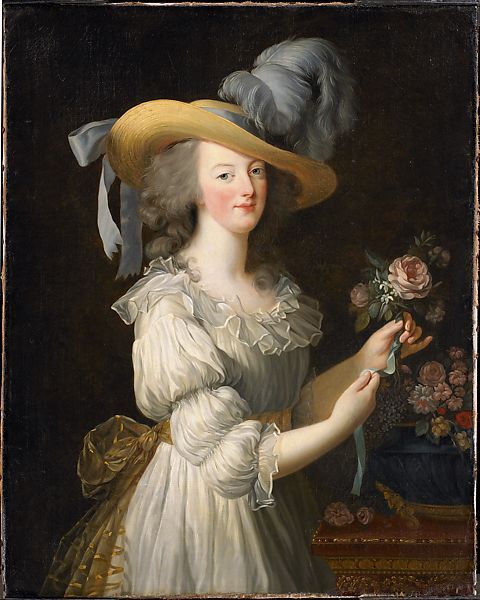
Marie Antoinette was hugely influenced by the return-to-nature philosophy of Rousseau. as she often felt out of place and ostracized by the ostentatiousness of French court life, she longed for simplicity and comfort, so the fantasy of the simple, happy peasant appealed strongly to her. She had her own miniature farm called l’hameau de la reine built at Versailles, where she could pet goats, pick wildflowers, and milk cows all day.
She famously caused immense controversy with this 1783 Elizabeth Vigée-Lebrun portrait depicting her in a simple cotton dress known as a chemise à la reine. This was a point in time when Marie could do nothing right. Even after being torn apart for her excess and luxurious lifestyle, wearing such a simple, comfortable dress was immediately decried as undignified for a queen, and she was accused of trying to suppress the French silk trade. The painting has to be re-done to show her in a silk dress.
In reality, Marie was trading one kind of luxury for another, neither of which was feasible for the French lower classes. This blindness to the reality of the French working class played a tremendous role in the downfall of the French monarchy.
172 notes
·
View notes
Text
Today (16th october) is the anniversary of Marie Antoinette's death, so let's talk about her most famous yet controversial portrait.
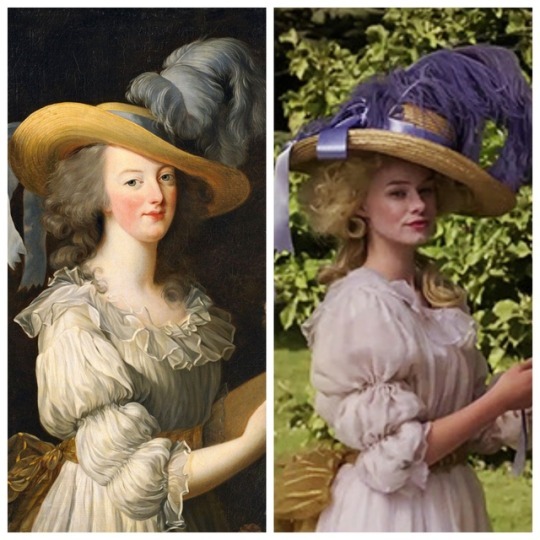
[Marie Antoinette en chemise, 1783 portrait by Louise Élisabeth Vigée Le Brun // The Versailles secret of Marie Antoinette, 2018]
In 1783, the famous female artist Élisabeth Louise Vigée Le Brun painted Marie Antoinette in a simple cotton gown known as a robe de gaulle.
The Queen didn't wear any jewels or embellishments, just a wide-brimmed straw hat tied with a ribbon band, topped with a few relatively modest plumes.
The scene is refreshingly natural when compared to the ornateness of the typical Rococo-era portrait. The gown gives off “an aesthetic of rustic simplicity,” writes Katy Werlin in Clothing and Fashion. But it was too much simple and "poor" at the time.
The backlash was immediate at the palace. Salon visitors demanded the portrait be removed from public view.
“Vigée-Lebrun unwittingly showed her [Antoinette] as an immodest woman, providing enemies with yet more evidence against the queen.” -The Exceptional Woman: Elizabeth Vigée-Lebrun and the Cultural Politics of Art
There were many who saw the garment as alarmingly scandalous. It closely resembled a chemise — the simple dress that served as a base garment for women at the time. In other words, the queen appeared to be posing in her underwear. This accusation gave the cotton gown the name by which it is now most commonly known: the “chemise à la reine,” or the “chemise of the queen.”
One critic wrote about the portrait:
"Many people have found it offensive to see these august persons revealed to the public wearing clothes reserved for the privacy of the palace."
The contemporary criticism against the portrait was not just that the Queen was wearing these casual fashions at all, but also that she dared to show herself wearing one in a public portrait display that was meant to be reserved for royal portraits, which clearly signified the wearer's status through sumptuous and royal clothing.
The portrait bears no markers of "queen" and indeed, if we did not know who the sitter was, it could be any one of the well-to-do women from this era.
So Vigée-Le Brun was forced to paint another potrait quickly, more appropriate this time, in attempt to calm the controversy.

She painted many copies. However some of original elements are retained: Antoinette wears a hat and holds a rose while wearing a bertha with two flounces and a skirt with two flounces.
But this time the dress is the essence of a French Queen.
Still it was Marie Antoinette herself who wanted that natural and simple look in her portrait, maybe as rebellion to the ancien régime.
Thanks to https://vivelaqueen.blogspot.com/2019/04/the-chemise-portrait-in-le-versailles.html?m=1
#marie antoinette#anniversary#women in history#france#women in art#french court#Versailles#1700s#Elisabeth Louise Vigée Le Brun#Elisabeth Vigée Le Brun#female artist#royal portrait#portraits#painting#royal painting#the secret versailles of marie antoinette#historical drama#history#female painter#fashion#1700s fashion#french monarchy#queens#monarchy#nobility#old fashioned#aesthetic#french art#french artist#beauty
204 notes
·
View notes
Text
Tim Tronckoe’s History With Ghost + Analyzation of the Preview Imagery
No one asked for this but here it is anyway in case someone cares.
Tim Tronckoe (Instagram, Website, Facebook) first hooked up Ghost during Papa II’s reign and took some iconic shots way back when.


He did the same for Papa III: some live photos that have been saved and re-uploaded to Pinterest, Tumblr, etc. that I forgot how clear this particular original one was (unfortunately the high res versions are no longer on his site).

He also took what I believe was one of the last, if not the last fancy promo photo of Papa III and the ghouls.

(I can’t tell which of those beefy boys is Chris and which is Ben)
Unbeknownst to I think most Ghost fans, Tim started dropping hints at some sort of 18th century French rococo-style project as far back as May 19, 2019.
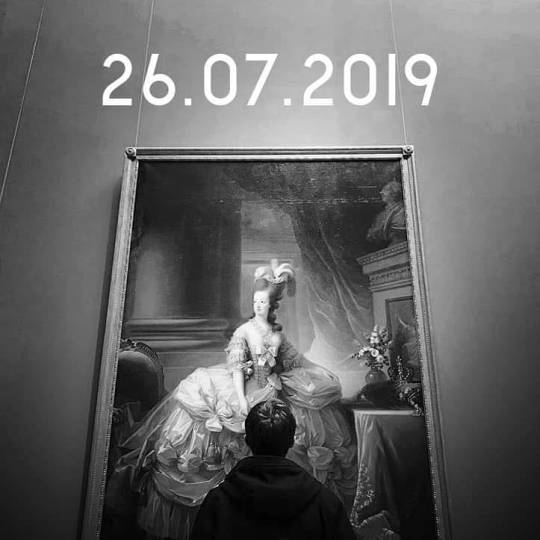
A person looking up at Élisabeth Louise Vigée-LeBrun’s portrait of Marie Antoinette. This is currently held at the Kunsthistorisches Museum in Vienna.
Two weeks later on July 3, Tim posted a second 26.07.019 image to his Instagram:

More French rococo, sort of: this is a very casually made 18th century menswear costume. The style is based on something like this which you’ve probably seen in a ton of movies set in the late 1700s. Nothing to indicate anything Ghost-y...

... until the next day. Sort of. Skull rings aren’t exactly Ghost-specific but it’s an interesting combination of styles. So that was July 4.
On July 6, a short compilation video of an old cathedral as well as numerous women in historical fashions, including
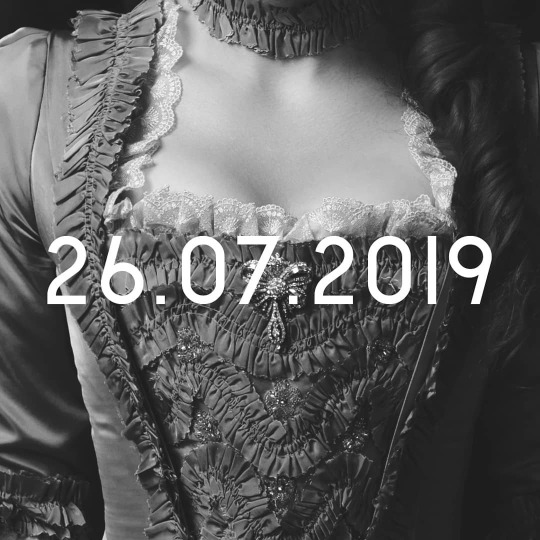
A woman in the makings of a “robe à la française” style dress from the 1760s-1780s. Probably easily identifiable as “Marie Antoinette” dress and thus associated with the excess, irresponsibility, and heartlessness associated with the French aristocracy of the time. The brooch shows up in some of the preview videos. This style of scrunchy ruffles is iconic and shows up in a fuckton of costumes but at this point I don’t think anyone is still reading/cares.
The next video shows the wearer of said dress in the signature (I’m saying this a lot) powder blue Marie Antoinette was and still is often depicted in, perhaps most famously in this portrait on display at the Palace of Versailles.
So this definitely isn’t just your everyday 1700s stuff, it seems to point specifically to either Marie Antoinette or a symbol of the aristocracy.
But there’s also a significantly less formal, much plainer all-white dress from the same era as indicated by the shape of the stomacher and the pannier.

But they didn’t stop at the 1700s?! Someone is wearing a Tudor ruff from the 1500s? They’re probably most associated with Queen Elizabeth I (below) and Shakespeare.

Also Anne Boelyn is there????

There’s also someone in white (Elizabethan person?) with white crucifix accents on fabric somewhere and an ornate prayer book.
But most important:
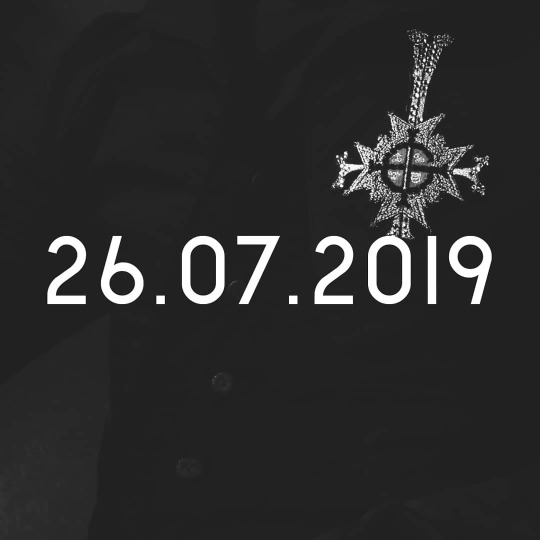
Cardinal fucking Copia. That is absolutely his black suit.
Given Ghost has been all over Europe lately and I’m pretty sure this was filmed in Europe, I’m really hoping Copia and, in particular, TF will be physically present in these scenes rather than filmed separately à la the He Is video. It seems like the perfect opportunity given the whole cardinal thing.
But who knows. See you in 15 days.
Thank you for coming to my stupid TED talk.
232 notes
·
View notes
Text
I have a dilemma.
Should the middle party song be about;
The palace of Versailles and all of their lavish parties
Or
Elizabeth Vigée-Lebrun, royal painter and the fashion of the time ?
Help pls?
12 notes
·
View notes
Note
Who are your favorite female painters? Give me a top ten :)
I've been waiting for a question like that! ❤️ There are so many fantastic women in art history that I can't even limit this list to only ten. Here's a list some of my favorites and some honorable mentions! 🎨✨
Marie Spartali Stillman
Emma Sandys
Evelyn de Morgan
Frida Kahlo
Angelika Kauffmann
Élisabeth Vigée-Lebrun
Élisabeth Sonrel
Tamara de Lempicka
Eleanor Fortescue-Brickdale
Artemisia Gentileschi
Other talented ladies: Henrietta Rae, Elizabeth Jane Gardner, Kate Bunce, Eleanor Vere Boyle, Elisabetta Sirani, Marie Egner, Anna Lea Merritt, Elisabeth Jerichau-Baumann, Olga Boznańska and one modern artist that I love, Annie Stegg.
96 notes
·
View notes
Text
youtube
Loved everything about this film - direction, performances, cinematography and use of music.
From the TLS review, Liberté, égalité, sororite by Muriel Zagha:
“Like Vertigo, this is a film about love, and about the gaze. But where Scottie’s focus on Madeleine in Vertigo is expressive of a desperate, psychotic desire to possess an elusive object, here Marianne’s intense, inquiring gaze, turned on Héloïse, is benevolent and, in fact, confers power on its subject. This is in part because Marianne is an artist: in an act of feminist archaeology, Sciamma chose her period in order to explore what might have been the experience of one of many long-forgotten female painters of the eighteenth century, such as Elizabeth Vigée-Lebrun or the lesser known Adélaïde Labille-Guiard and Anne Vallayer-Coster. Beyond this, what Marianne’s act of looking embodies is the female gaze, a point of view that mirrors that of Sciamma herself and attempts always to frame Héloïse as subject, not object.”
From Mark Kermode’s review in The Observer:
“Digitally filmed in tactile, painterly hues by Claire Mathon, who did such shimmering work on Mati Diop’s Atlantics, Portrait of a Lady on Fire (the French title uses the less Jamesian “jeune fille”) seamlessly intertwines themes of love and politics, representation and reality. At times it plays like a breathless romance, trembling with passionate anticipation. Elsewhere, it seems closer to a sociopolitical treatise, what Sciamma has called “a manifesto about the female gaze.
Musically, Sciamma keeps things sparse and diegetic, mirroring Héloïse’s cloistered experience (she longs to hear an orchestra), emphasising her silenced sense of imprisonment. All the more significant, then, that a signature scene bursts into vibrant song – a chorus of live vocals and handclaps that momentarily lifts the film into an ecstatically uncanny reverie, as mesmerisingly magical as anything I can recall seeing on screen.”
1 note
·
View note
